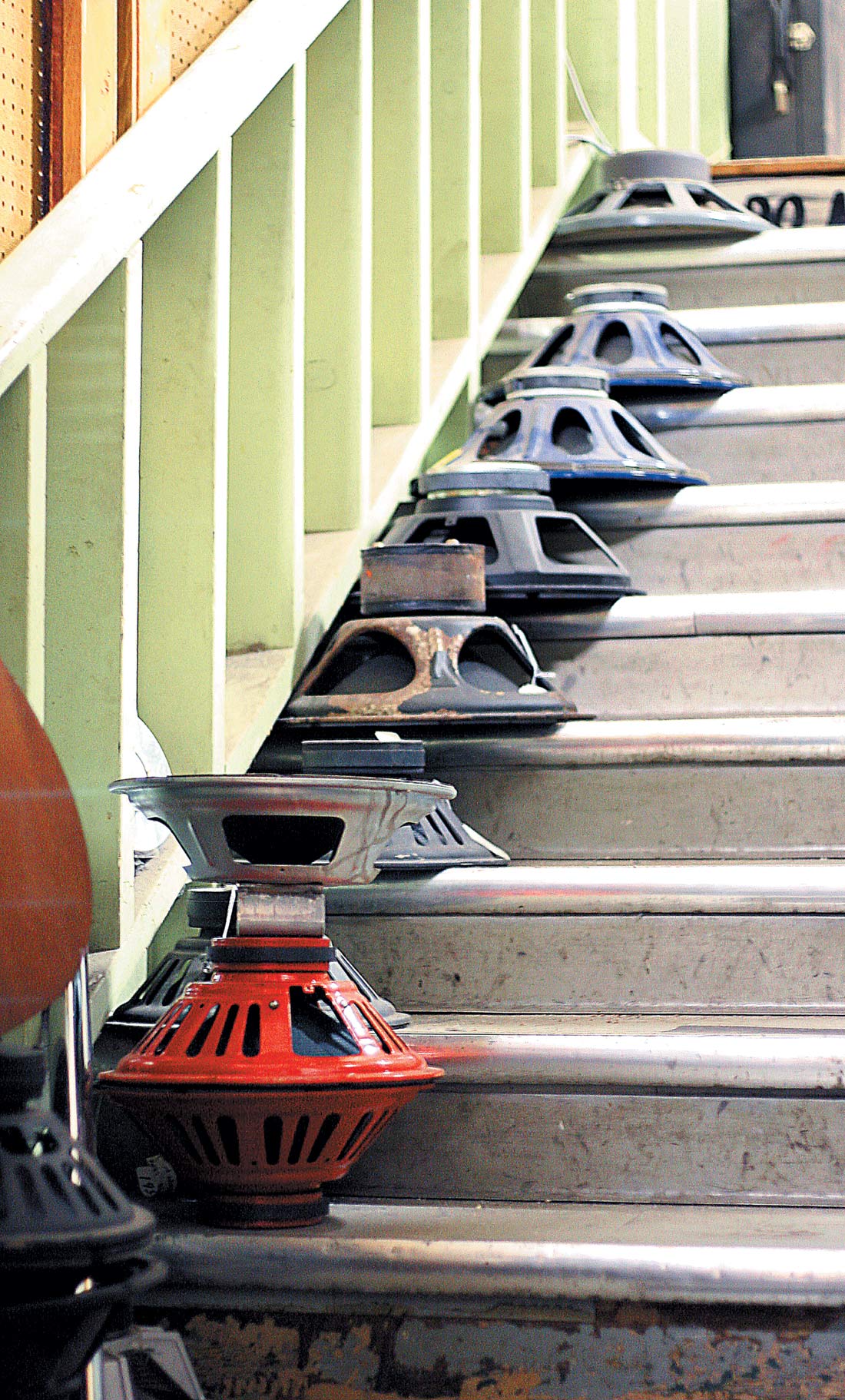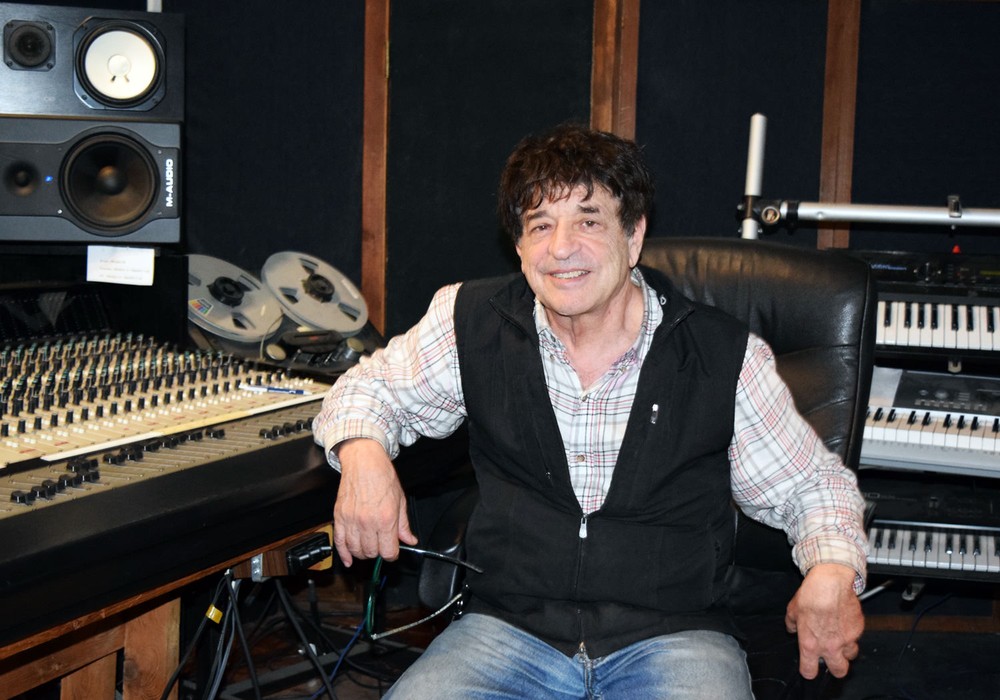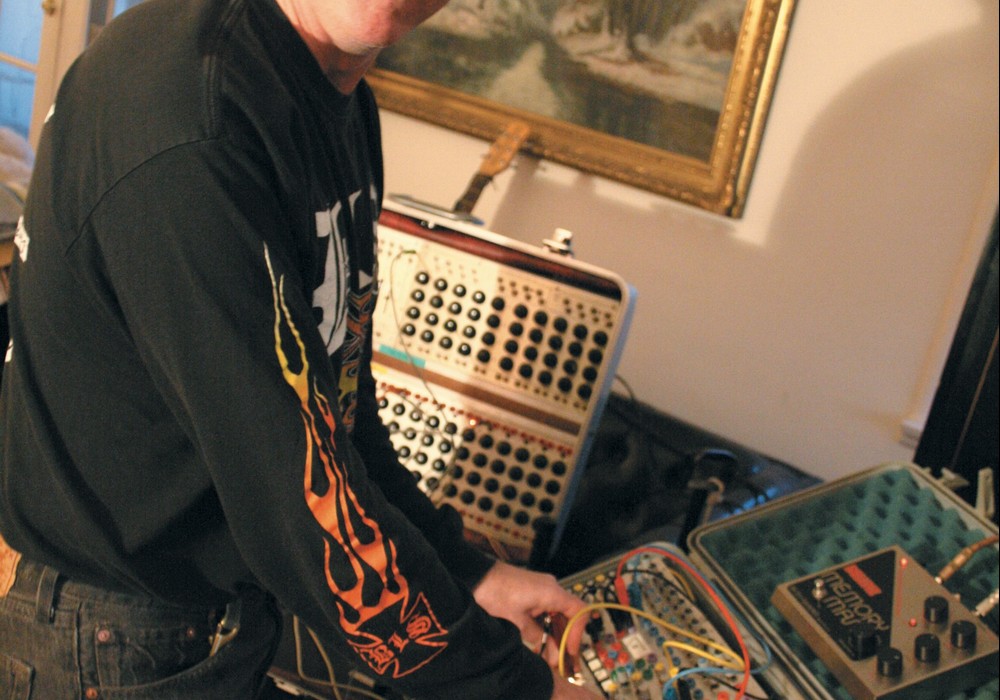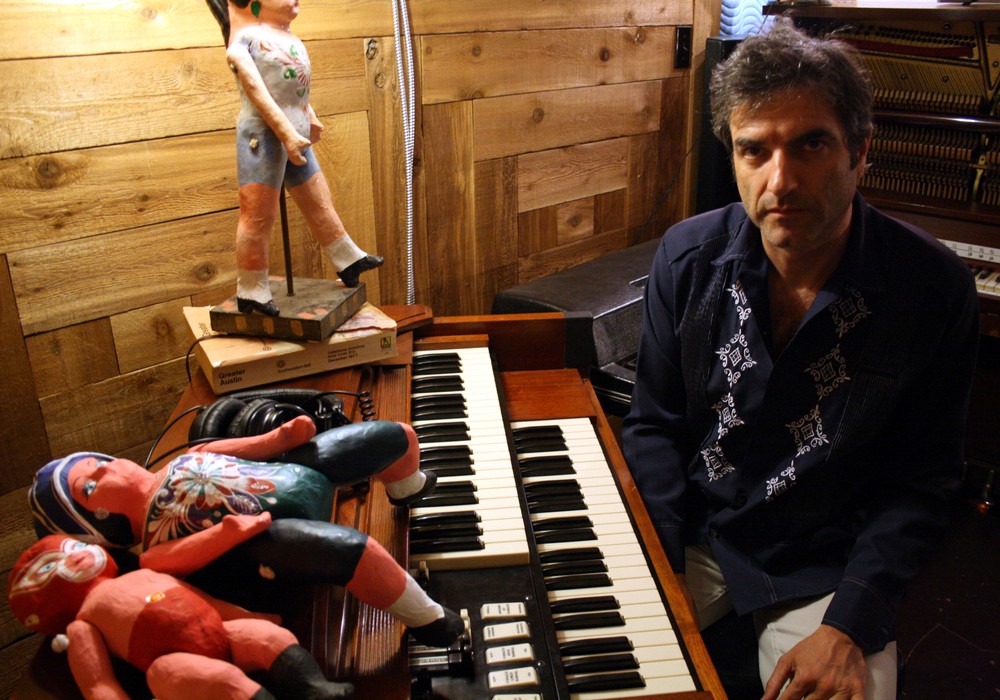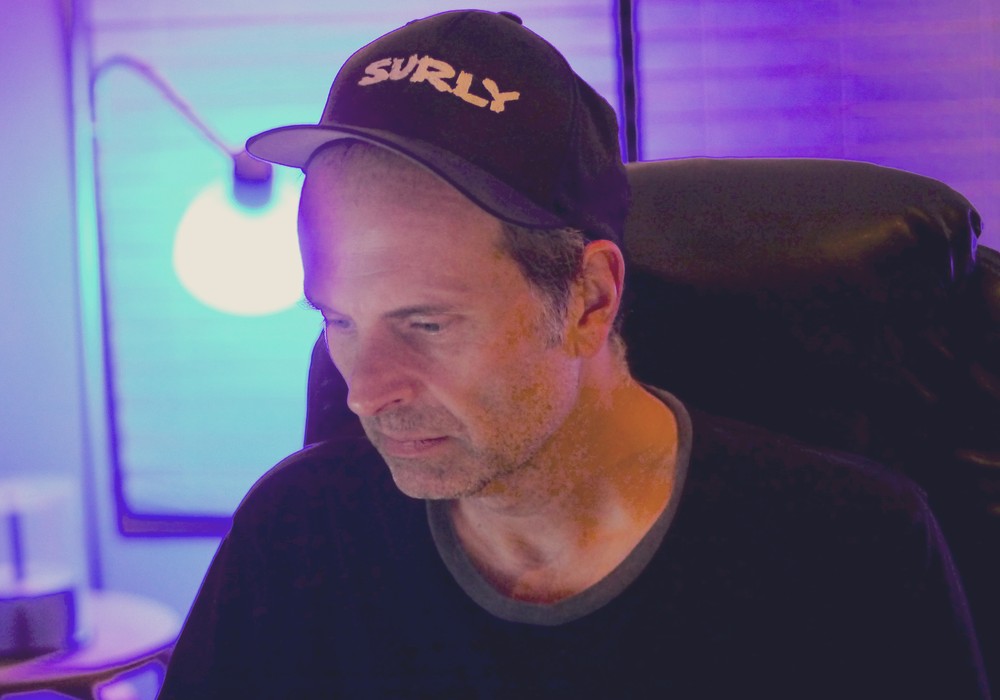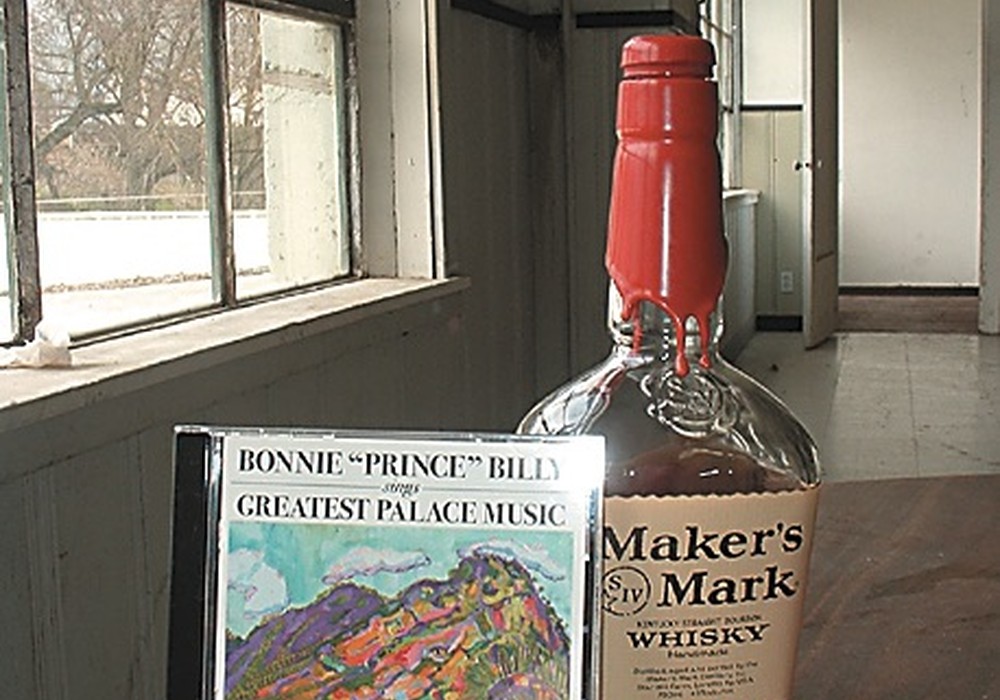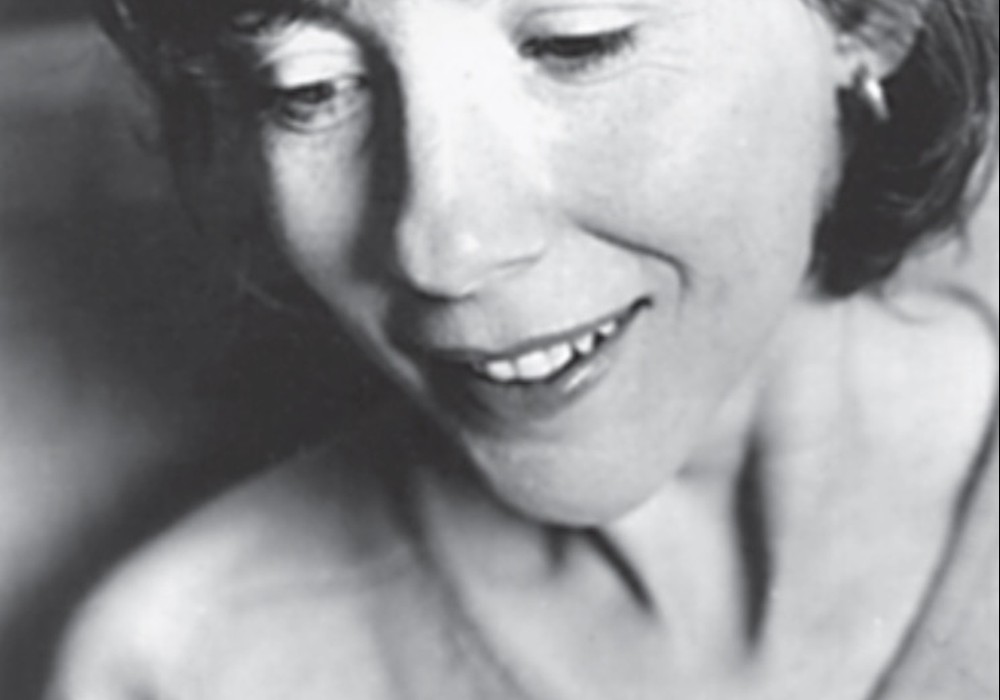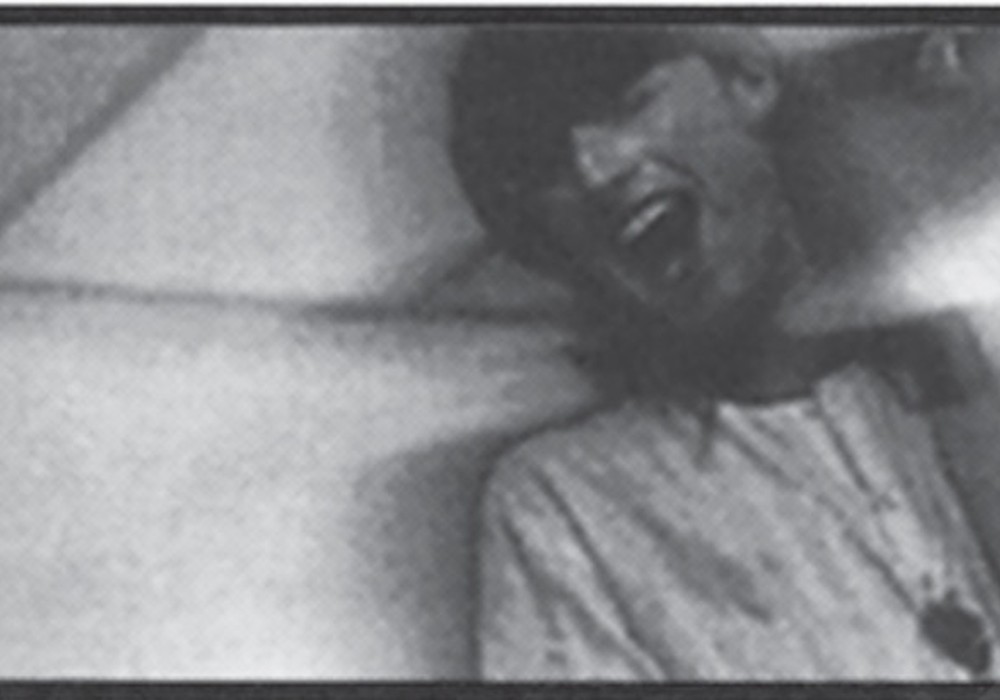I think it's safe to say that we have fully entered the era of drag-and- drop production, a time when the craft of producing music albums can be as simple as placing computer-based audio files onto a software grid. Drag-and-drop production has rendered previously required skills, like playing an instrument and engineering a recording, optional. I've seen young kids "produce" killer sounding tracks with Apple's GarageBand in ten minutes. To some, this is a positive revolution that puts the means of production in the hands of the people. To others, this is a frightening turn toward a global monoculture — a time when the music producer is merely a consumer of prefabricated chunks of corporate music.
In steps Matthew Herbert, a British musician and producer, who inhabits the highest echelons of electronic music (a genre in which drag-and-drop production is fast becoming the norm). Matthew is overtly careful about avoiding what he sees as the conformist traps of current technology, especially those found in today's music production software. He has written a set of rules for himself that, basically, require him to return to the craft of making all sounds himself. He calls this the Personal Contract for the Composition of Music (PCCOM). See the handwritten examples above right.
Certainly these mandates keep Matthew Herbert out of the drag-and- drop production scene, and they may be part of the reason why at a recent NYC club date, there were no less than seven personal video cameras hovering like hawks over the turntables while he spun vinyl into the wee hours for a packed house. These fans may have known him for his work as Rockit or Radio Boy (early DJ monikers), for his remixes of songs by Björk, R.E.M., John Cale, Yoko Ono and Perry Farrell, for his big band album recorded at Abbey Road, or his album (Plat Du Jour) made entirely of samples of food. This is no lazy man, as you will see. Matthew and I got together at Mavericks Studio in NYC and talked about making records.
You've created whole albums with what would be considered non-musical sounds — a Coke can, jumping up and down on Gap products — and yet you bring them into a musical context. I'm curious about how technology and the tools that you use affect that process. What's possible and not possible? What would you like to be possible that isn't possible?
I think a revolution really happened with the sampler. Intellectually there was never a boundary between noise and music. In the history of music and in the history of technology, that boundary has become more and more defined to the point where we think that, say, Placido Domingo or someone like him makes the most beautiful sound that anyone could possibly make, and the sound of a rusty nail on tin is the worst possible sound. Those distinctions have never really existed for me. When the sampler came along, it undermined that boundary in one fell swoop. As I started out sampling, I just went wild with this new freedom and would record the sounds of all the good things in my life. Then I realized that all the bad things made a sound, too. So I wasn't interested in the sound of a cup of tea anymore — I was interested in a cup of tea served to George Bush when he came to stay with Tony Blair. I wanted to know the stories, and I try in the process of recording to allow those stories to breathe. So, again, I don't want to just record a drummer, I want to record a drummer on a particular day, say, his birthday. I want to know how that effects his playing. Or, on one of the tracks on my new record, for example, the drums were recorded at 100 miles per hour in the back of my car. So, we're breaking the law, firstly, and secondly we're in personal danger, because we're in my 1980 BMW that has a steering issue. So, how does a drummer play differently there? It starts to inform the logic of the song. One of the songs is about death, so I recorded the drums in a hot-air balloon at 2000 feet. And again, there's some personal danger, and it's like the soul rising, and suddenly it tells a different story. So, again, the drummer plays differently. We got the most incredibly tight sound up there, too. The biggest problem, of course, were the flames filling up the balloon. But that's the story, so instead of a ride cymbal, we used the sound of the jets, so you have white noise, which is essentially the same thing as a ride cymbal — you're after some sort of high-frequency bed. I don't want to deny that we were in a hot-air balloon, but I also don't want to make it a novelty. It's there for sonic reasons, and philosophical reasons.
So recording the drums is essential to the story.
You know, drums are so boring in a way. We can hit anything in the world, so why would we hit something while ten-thousand other people are hitting something very similar? It seems a bit limiting. I don't really understand this approach where you have a kind of universal environment and you try to get what you want out of this particular environment when you have the potential to go anywhere and record. One of the tracks, again — we recorded drums in the sea, with hydrophones. And, again, you have no idea how it's going to sound, and then you end up getting the amazing wash of the stones as the sea picks them up and brushes them up against the kit.
How did you do that?
I do all my field recordings on a Nagra-V hard drive recorder, so I can just transfer it by Firewire. The A/D converters are still great, and the preamps are really good. So we just have a stereo mic to do ambient stuff. We rented wetsuits and went in the middle of winter, very cold, and walked into the sea and just dunked these hydrophones in. Half of it's completely unusable, and then after an hour and a...
